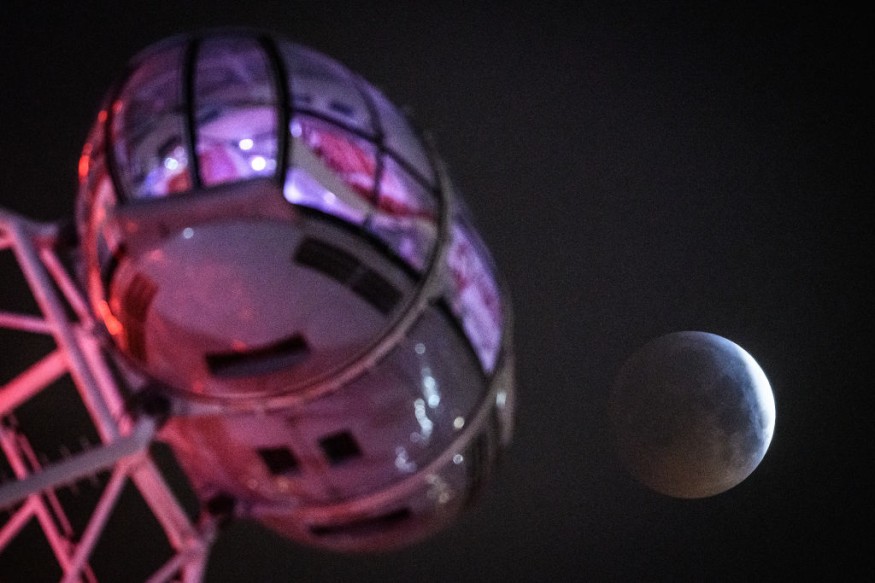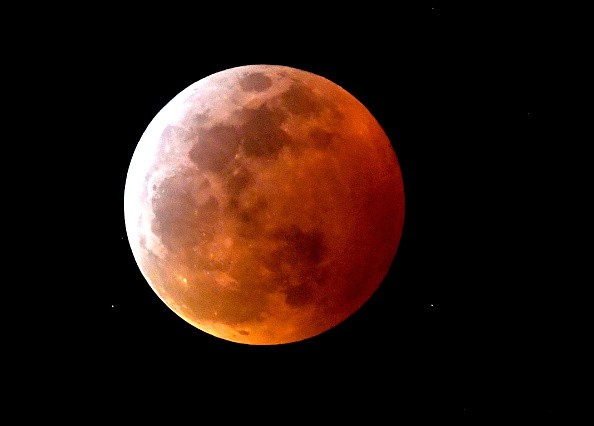Weather allowing, northeast Kansans should be able to see a shiny, full moon slowly disappearing from the sky as part of a total eclipse on Wednesday morning, according to Mike Ford.

But, according to Ford, the director of Banner Creek Science Center and Observatory near Holton, anyone in this region will likely see the moon set in the west before the start of the nearly 14-minute, 30-second cycle when the moon will be in total eclipse starting at 6:11 a.m.
Free Use of the Observatory
The public should be able to view the celestial show for free from the Banner Creek observatory at 22275 N Road, which is set to open at 3:30 a.m. Wednesday, according to Ford.
Viewing the Lunar Eclipse
Unlike solar eclipses, lunar eclipses are safe to see with your eyes.
Even then, if clouds obscure the view, the observatory will not open, according to Ford.
He said it was unclear Monday evening if the sky over northeast Kansas will be cloudy during the eclipse.
According to Space.com, Wednesday's total lunar eclipse will be the first of four eclipses in 2021, and it will be the first total lunar eclipse since January 2019.
Related Article : A Super Blood Moon Will Occur On May 26 And Here's What You Need To Know
Lunar Eclipse

Eclipses happen simultaneously for everyone on Earth, but how much of the eclipse each person can see depends on their location and time zone.
People will be able to see more of the eclipse the farther west they are from Topeka, according to Washburn University astronomy lecturer Mark Smith.
From around 6:11 a.m. to 6:25 a.m., the "absolute" eclipse will be visible.
"If you look closely on Wednesday morning about 4 a.m., you'll see the penumbra (the first component of the Earth's shadow and the lightest) begin to cross the sky," Smith said. "The umbra (the deepest portion of the Earth's shadow) would reach the moon by 4:45 a.m. Before the eclipse reaches totality, the moon sets in the western skies at 5:45 a.m. Sunrise is at 6:25 a.m., which is a little later than normal."
A lunar eclipse will only happen when the moon is full.
Super Flower Blood Moon

The moon will be a "super flower blood moon" on Tuesday night because:
- According to The Old Farmer's Almanac, full moons in May are known as "flower" moons because the month is normally characterized by an explosion of blooming flowers in North America.
- According to NASA, the full moon will be at the nearest point in orbit to Earth and is known as a "supermoon" because of its bigger and lighter presence.
- During a lunar eclipse, the moon moves into Earth's shadow, giving it a reddish tint and earning it the moniker "blood moon."
According to NASA, the red color is produced by "a ring of light generated by all the sunrises and sunsets that happen across our planet" as sunlight passes through Earth's atmosphere.
During most lunar eclipses, according to Smith, the moon takes on a coppery hue rather than a crimson hue.
"During a lunar eclipse, the moon looks coppery rather than dark, and some of the sun's light, which is usually obscured by the eclipse, also gets to the moon because the earth's atmosphere bends the light that passes through it," he said. "The sky is blue when blue light is distorted further. This indicates that the light that passes through the Earth's atmosphere and still reaches the moon has the blue light lost, making it look reddish."
The next lunar eclipse will occur on November 19th.
For more Space news, don't forget to follow Nature World News!
© 2025 NatureWorldNews.com All rights reserved. Do not reproduce without permission.





